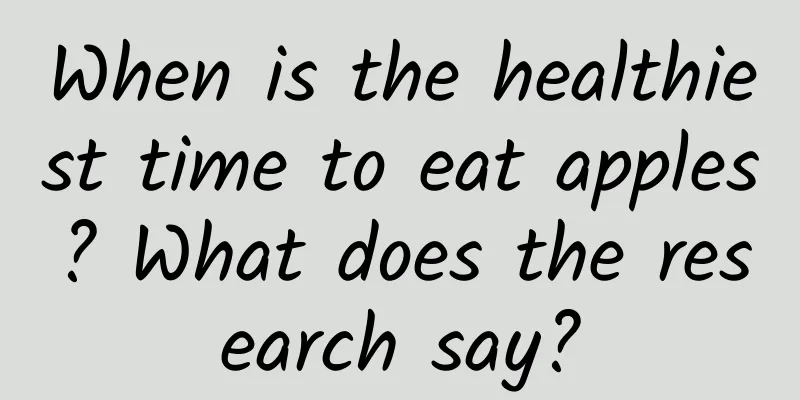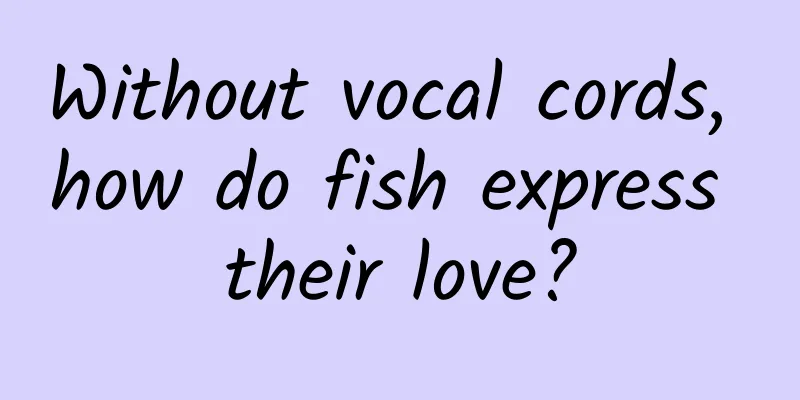When is the healthiest time to eat apples? What does the research say?

|
Apple is a fruit known for its health benefits, and the research literature on it can be said to be the most among all kinds of fruits. For example, apples are rich in polyphenol antioxidants and pectin. Apples are beneficial to blood lipids and blood pressure. Apples are beneficial to preventing cardiovascular diseases. Apples are beneficial to preventing diabetes. Apples are beneficial to preventing gastrointestinal cancer. Apples are beneficial to reducing allergy-related diseases in newborns, etc., all of which have been reported in the literature [1-2]. However, there are various opinions about when to eat apples. "Golden apples in the morning, rotten apples in the evening", "Fruit cannot be eaten before or after meals, fruit can only be eaten between meals", etc., which makes people feel confused. The saying that you can't eat fruit before or after meals is mainly based on the special circumstances of some patients with gastrointestinal diseases. For healthy people with good digestive ability, there is no reliable evidence that eating fruit as a cold dish or before or after meals will harm health. The key is that the amount of fruit you eat should meet the dietary guidelines, which is between 200 and 350 grams per day, rather than eating it uncontrollably. However, in terms of lowering post-meal blood sugar, there is a time when eating apples is particularly beneficial - 30 minutes before a meal [3]. Studies have found that eating an apple containing 15 grams of carbohydrates 30 minutes before breakfast has this benefit. If you are not interested in the experimental content, please go directly to the end of the article or just look at the bold font. To be fair, this experiment compared the high and low blood sugar responses using equal carbohydrates. Because eating apples also consumes a lot of sugar, the experiment grouped the subjects like this: The first group ate white rice containing 50 grams of usable carbohydrates, which was cooked with about 68 grams of white rice and 1.5 times the amount of water. The cooked weight was about 170 grams. Knowledge Point 1 White rice is not pure carbohydrates, it only contains about 74% carbohydrates. To eat 50 grams of carbohydrates, you need to cook 68 grams of white rice. As for how much water to add, it has nothing to do with the carbohydrate content, it only has to do with whether it is soft after cooking. Generally speaking, the softer it is cooked, the higher the GI value. The second group ate an apple containing 15 grams of available carbohydrates and rice. However, the rice was reduced in quantity, minus 15 grams of available carbohydrates, and the cooked weight was only 117 grams. The total carbohydrates were still the same, 50 grams. Knowledge Point 2 The carbohydrate content of apples varies widely, ranging from 8% to 15%. This apple raw material was assayed for sugar content, and it was calculated that 143 grams of apples with skin and core removed contained 15 grams of carbohydrates, of which fructose and glucose contained 8.3 and 6.7 grams respectively, with almost no sucrose. The reason why the apple peel is not removed is because it contains more antioxidants and dietary fiber. Generally, any research on the health benefits of apples does not remove the peel. The third group ate an apple containing 15 grams of available carbohydrates first, and then ate rice 30 minutes later, with the amount of rice also reduced, the same as the second group. The fourth group first drank a sugar water containing 15 grams of available carbohydrates, the type and content of sugar in which was the same as the 143 grams of apples, 8.3 grams of fructose and 6.7 grams of glucose. The amount of rice was also reduced, the same as the second and third groups. Sugar water containing 50 grams of glucose was used as a reference food to measure the blood sugar curve within 4 hours after the meal. A total of 18 healthy subjects participated in the experiment. The study found that among the four ways of eating, eating only white rice had the highest blood sugar response. Eating white rice and apples together reduced the blood sugar area under the curve by 23% in the first two hours. Eating this group 30 minutes before a meal reduced the blood sugar area under the curve by as much as 51% in the first two hours, and the blood sugar fluctuation within 4 hours after the meal was also reduced by half. If we use the GI value of a meal to express it, then eating rice is 82, eating rice and apples together is 64, and eating apples first actually reduces it to 40! This effect of lowering blood sugar after a meal is really quite powerful. Drinking sugar water first can also reduce the GI value to 69. This shows that the sugar in apples does not have a bad effect, and even contributes to the blood sugar lowering effect of apple meals to a certain extent. Of course, compared with eating apples, drinking sugar water is still far less effective. The subjects were asked how they felt during the experiment, and they said that they did not feel any discomfort after eating the apple first. However, many people may ask: Do I have to eat less rice if I eat apples? Who can do that? If I eat an apple before a meal and eat the same amount of rice, will it still have the same blood sugar-lowering effect? Is it okay to eat pears? Is it okay to eat oranges? The researchers also took these issues into consideration and conducted a second batch of experiments[4]. This time, apples, pears and oranges, three of the most common fruits in winter, were used in the experiment. Moreover, the amount of carbohydrates in the experiment was divided into two groups. One group was called the "isocarb group". Like the previous study, they ate fruit but subtracted rice, and the total available carbohydrate intake was 50 grams. The other group, called the "high-carb group," ate more fruit and no less rice. That is, after eating 15 grams of fruit and 50 grams of rice, the total available carbohydrate intake was 65 grams. In the equal carbohydrate group, apples were found to have the best effect, which was the same as the previous experiment - eating apples 30 minutes before a meal reduced the postprandial blood sugar response 2 hours after a rice meal by 40%. Pears were slightly worse, only reducing it by 25%, and oranges had the weakest effect, at only 8%. From the perspective of post-meal blood sugar fluctuations, eating apples first has a 50% lowering effect. Eating oranges first has the weakest effect, at about 25%, a decrease of about 1 mmol/L, which is also not negligible. So, what about the high-carb group? Because I ate 15 grams more carbohydrates, the difference in the area under the blood glucose curve 2 hours after the meal was not too big. Eating apples and pears first had similar effects, only reducing blood glucose by 17% and 20% respectively, while oranges only reduced blood glucose by 10%. Moreover, even if more fruit is eaten and the total amount of carbohydrates is increased to 65 grams, the post-meal blood sugar fluctuations are still significantly reduced compared to a pure rice meal with only 50 grams of carbohydrates, with a reduction range of between 1.2 and 1.5 mmol/L. This result is very surprising. It shows that eating fruit before a meal does not increase blood sugar levels. In addition, eating fruit before a meal can even effectively reduce the fluctuation of blood sugar levels after a meal. Eating fruit (or other sugary foods) 30 minutes before a meal has a better effect on controlling blood sugar after a meal, which has been confirmed by several studies. Eating at the same time has a weaker effect, and this result is by no means accidental. There must be an internal metabolic mechanism, and its specific mechanism needs to be studied in depth. (Recently, there is a new term called "chrono-nutrition", it seems that the time of eating is really important...) Having talked about the research related to the time to eat apples, there are a few things I would like to remind you of. 1 This study was conducted on healthy people, and it cannot be confirmed whether diabetics can achieve the same blood sugar control effect after meals by eating apples before meals. 2. The eating method of eating fruit first is limited to people with normal gastrointestinal digestive function. People who are particularly afraid of cold, prone to diarrhea, and those with irritable bowel syndrome should be cautious about eating an apple before a meal. If you feel uncomfortable, don't eat it this way. 3 When using this method, the accuracy of time is very important. If you are not sure about the meal time, then there is no point in talking about "30 minutes ago". For people who control blood sugar, it is necessary to ensure that meals are on time, and the time cannot be too early or too late, too much or too little. Eating at regular times and in regular quantities is as important as what you eat. You must not allow yourself to skip meals just because you ate an apple. 4 For diabetic patients, food cannot replace drug treatment, but it is also necessary to pay attention to adjusting the dosage of drugs according to the effect of food. If blood sugar is lowered after a meal, the amount of insulin and hypoglycemic drugs must be reduced, otherwise it is easy to cause dangerous hypoglycemia. In addition, although apples are safe and healthy, the long-term effect of eating apples before meals in controlling blood sugar and whether it will always be so effective still needs more research observation and verification. References: 1 Hyson, DA A Comprehensive Review of Apples and Apple Components and Their Relationship to Human Health. Adv. Nutr. 2011, 2, 408–420. 2 Alperet, DJ; Butler, LM; Koh, W.-P.; Yuan, J.-M.; Van Dam, RM Influence of temperate, subtropical, and tropical fruit consumption on risk of type 2 diabetes in an Asian population. Am. J. Clin. Nutr. 2017, 105, 736–745. 3 Lu, J.; Zhao, W.; Wang, L.; Fan, Z.; Zhu, R.; Wu, Y.; Zhou, Y. Apple Preload Halved the Postprandial Glycaemic Response of Rice Meal in Healthy Subjects. Nutrients 2019, 11, 2912. 4 Lu, Source: Fan Zhihong_Original Nutrition Information |
>>: The heart is most vulnerable in winter. How can we spend the winter smoothly?
Recommend
A collection of VIP membership courses for senior partners of Juyi Thinking, helping tens of thousands of people realize profits through short videos
The Juyi Thinking Collection Course, Instructor: ...
WeChat 8.0 era begins! Teach you how to make dynamic emojis
Recently, WeChat has updated to version 8.0. In t...
What is the paid search effect? Here are four revelations for corporate promotion
"I know that half of my advertising expenses...
How much RMB is equivalent to 1 US dollar? Real-time quotes of USD/RMB exchange rate today, July 23, 2020
How much RMB is equivalent to 1 US dollar? Today&...
A summary of the latest 34 mainstream mobile game channel partners in 2016 with contact information!
In the past ten years, there have been many chang...
Reminder! Don’t use the air conditioner like this in summer, it may cause blindness!
Expert of this article: Li Zongou, Master of Opht...
Why buy an iPhone 11 for the same price? After trying out the vivo NEX3, I realized that this is the phone of the future.
The mobile phone market is becoming increasingly ...
How can community apps prevent user churn?
Definition of churned users Different products ha...
This area of the United States has been extensively destroyed, and the culprit is actually the local "infrastructure maniac"?
From the perspective of biodiversity, the Arctic ...
Experts say that drying quilts can cause allergic rhinitis? Pay attention to this detail
Although it is quite cold in winter, the weather ...
91 Ten Articles: WeRide's valuation exceeds 20 billion, SAIC will launch a battery bank, and Huolala may build cars
1. WeRide raised hundreds of millions of dollars ...
Samsung enters automotive sector, cooperates with electric car companies to develop batteries
Beijing time, December 8, according to the electr...
A comprehensive analysis of “Zhihu channel distribution strategy”!
If you have any questions, go to Zhihu. This slog...
Learn these 8 "head to toe" health self-test methods to teach you to check yourself in time to eliminate health risks
Many people's lives I've been a bit hecti...









